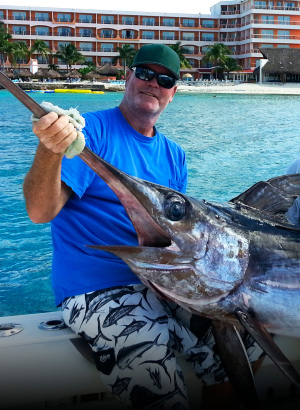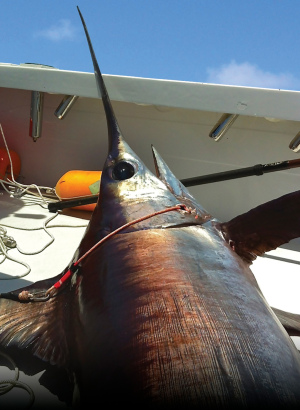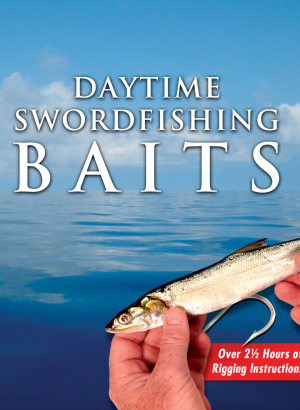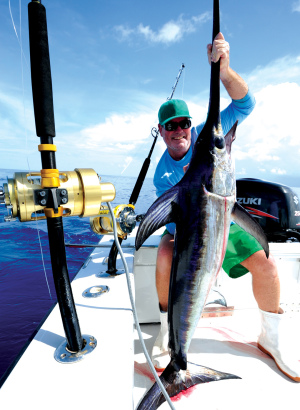Hooking into a brute swordfish represents the pinnacle for many anglers. But landing one requires mastery of specialized tactics. This comprehensive guide covers critical swordfish strategies - from gear and bait rigging to daytime and nighttime techniques. With insights from seasoned experts at In The Spread, discover how to conquer these elusive giants.
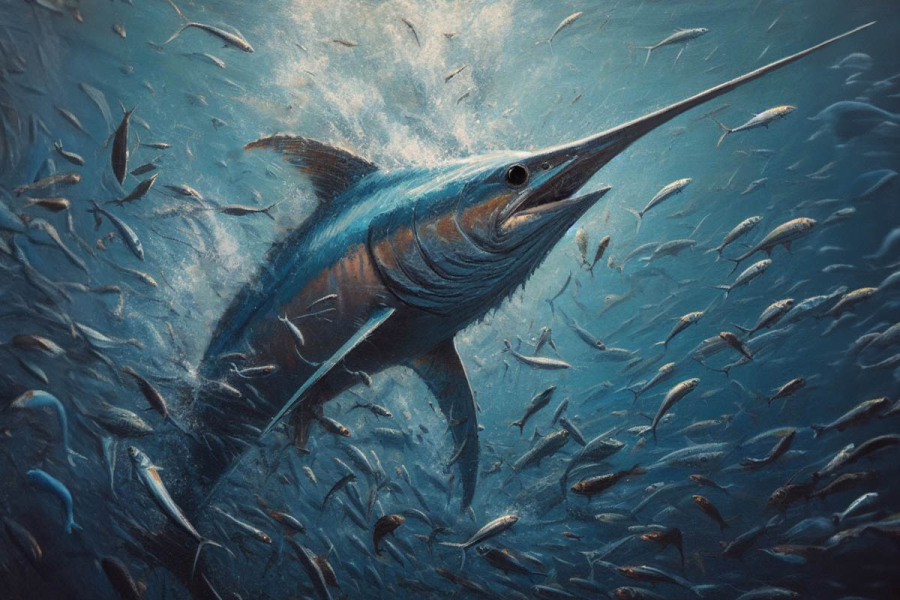
Catching Swordfish: A Comprehensive Guide
- Understanding swordfish behavior and migration patterns
- Essential gear and tackle for catching swordfish
- Effective bait rigging techniques for swordfish fishing
- Daytime and nighttime swordfish fishing strategies
- Tips and tricks from ITS experts on swordfish fishing
Understanding Swordfish Behavior and Migration Patterns
Swordfish are renowned for their nomadic nature, frequently embarking on extensive journeys in pursuit of sustenance. Their migratory behavior, influenced by oceanic currents and thermal conditions, plays a crucial role in determining their whereabouts. A comprehensive understanding of these migratory patterns and the intricacies of swordfish behavior forms the bedrock of successful fishing strategies.
Inhabiting tropical and temperate regions of the Atlantic, Pacific, and Indian Oceans, swordfish can be encountered from near-surface waters to depths of 550 m (1,800 ft), and in exceptional cases, as deep as 2,234 m. They exhibit a preference for water temperatures ranging from 18°C to 22°C (64°F to 72°F) but possess the ability to tolerate a broader spectrum of temperatures due to their unique thermoregulatory capabilities. Specialized organs situated adjacent to their eyes enable them to maintain elevated temperatures in their eyes and brain, enhancing their visual acuity and hunting efficiency in cold, dark waters.
Swordfish prey upon a diverse array of fish and invertebrates, including squid. They employ a distinctive hunting technique, utilizing their elongated bill to slash back and forth, stunning or wounding their prey in the process. Over time, they have evolved unique adaptations, such as specialized eye muscles and a heat exchange system, which allow them to dive into deep, cold waters in search of food.
Renowned for their highly migratory nature, swordfish undertake seasonal movements in response to changes in water temperature, food availability, and spawning grounds. They exhibit a tendency to gravitate towards warmer waters during the winter months and cooler waters during the summer. Additionally, they engage in vertical migrations, spending more time near the surface at night and descending to greater depths during the day. This behavior, known as diel vertical migration, is influenced by factors such as light intensity, prey distribution, and predator avoidance.
Swordfish reproduce year-round in tropical and subtropical waters, with peak spawning activity occurring during spring and summer. They release eggs and sperm into the water column, where external fertilization takes place. The eggs hatch within a span of two to three days, and the larvae undergo rapid growth until reaching maturity at four to five years of age. The maximum lifespan of swordfish is believed to be at least nine years.
By observing and adapting to the behavior of swordfish, anglers can significantly enhance their chances of a successful catch. Utilizing tools such as sea surface temperature charts, satellite imagery, bathymetric maps, tide tables, moon phases, and fish finders, anglers can identify potential swordfish hotspots. Through a comprehensive understanding of swordfish feeding habits, movements, preferences, and responses to various stimuli, anglers can develop effective strategies to attract and hook these magnificent creatures.
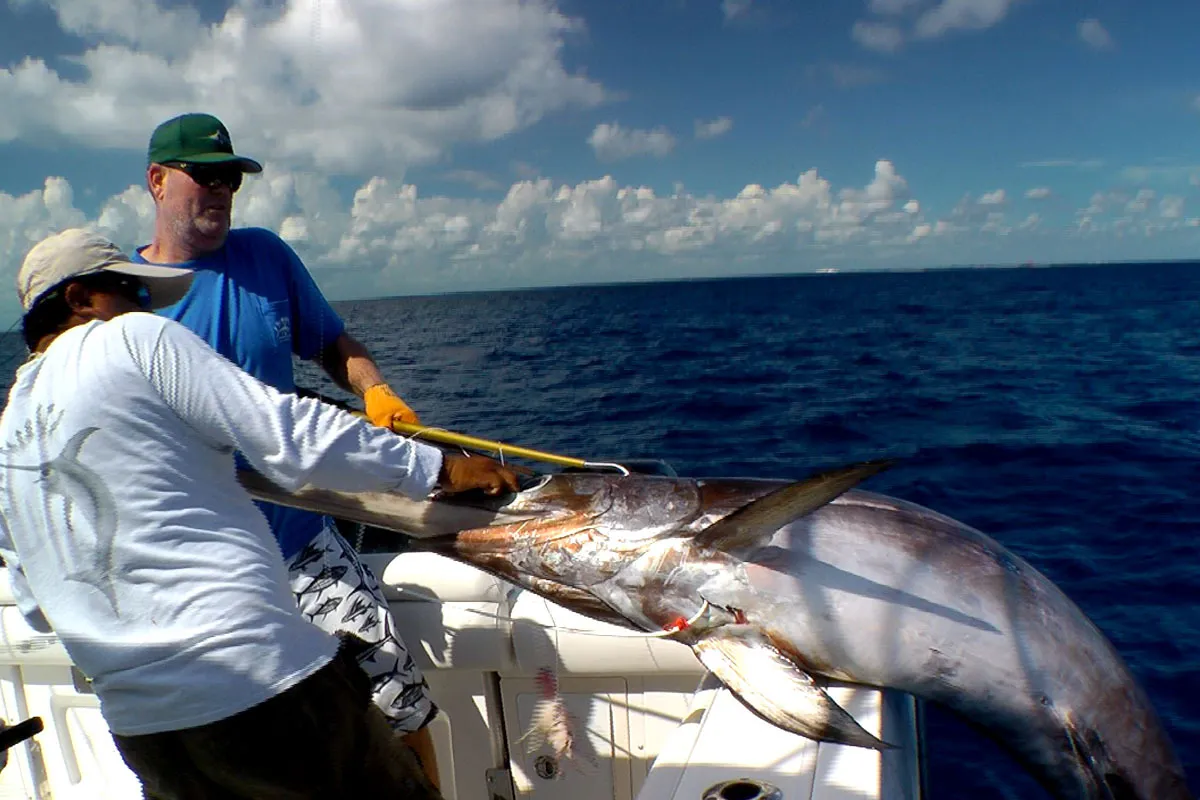

Essential Gear and Tackle for Swordfish Fishing
The adage "A workman is only as good as his tools" rings true in the domain of swordfish angling. The appropriate gear and tackle not only augment the likelihood of a successful catch but also ensure the safety and efficiency of the angler. From sturdy rods to the optimal line strength, every component of the equipment plays a pivotal role in confronting these formidable adversaries.
The following is an exhaustive list of indispensable gear and tackle for swordfishing:
- Rod: A heavy-duty rod, measuring 6 to 7 feet in length and boasting a line rating of 50 to 80 pounds, is highly recommended for targeting swordfish. The rod should possess a robust backbone to withstand the immense pressure of deep drops and powerful runs while also featuring a flexible tip to absorb shocks and prevent break-offs. A roller tip or guide is also advantageous in reducing friction on the line.
- Reel: This is not the point at which you decide to go with the budget buy. Swordfish will wreck your gear, if you go out under gunned. Go with the best quality reel you can afford. Be sure it has ample line capacity, a smooth robust drag system, high gear ratio, and unwavering performance to do prolonged battle with these bruisers from the deep. A conventional reel equipped with a level wind mechanism is favored over a spinning reel for enhanced control and durability. It is advisable to select a reel with a line capacity of at least 1500 yards of braided line. Electric reels are the norm and they can be pricey. Lindgrem Pitman SV 1200 is the way to go if you can swing it $$$$$. Read more about this electric reel in our article Electric Reels for Swordfish.
- Line: The selection of line hinges on personal preference, fishing depth, water clarity, current speed, and target size. Monofilament line exhibits greater stretchiness, abrasion resistance, and lower visibility compared to braided line but is also thicker, heavier, and more susceptible to twisting. Conversely, braided line is thinner, lighter, stronger, and more sensitive than monofilament line, albeit more expensive, visible, and prone to cuts. Some anglers employ a combination of both, utilizing braided line as the main line and monofilament line as the leader or top shot.
- Leader: A leader is a segment of line that connects the main line to the hook or lure. It serves multiple purposes, such as providing abrasion resistance, shock absorption, stealth, and rigidity. For swordfish fishing, a leader should be constructed from heavy-duty monofilament and dacron, with a length of 100 to 150 feet and a strength of 150 to 300 pounds. Further information about the leader system for swords can be found in our Daytime Swordfishing video.
- Hooks: Various types of hooks can be employed for swordfish fishing, with the choice being influenced by a myriad of factors. A more comprehensive exploration of hooks for swordfish is provided in our article Hooks for Swordfish.
Types of Hooks for Swordfish Fishing
- Mustad Ultra Point 11/0 3X-Strong Hook: This is a popular choice for rigging squid, a common bait used for swordfish. These hooks are known for their strength and are often used with a 15-foot, 300-pound-test mono leader.
- 9/0 to 11/0 J-Hook: For a basic nighttime swordfish rig, J-hooks in sizes ranging from 9/0 to 11/0 are recommended. These are typically used with a 10- to 12-foot leader, along with a weight, light stick or electric light, and a balloon attached to the line at the desired depth.
- 10/0 Mustad 7691 DT Southern Hook: Recommended for daytime swordfish rigs, this hook is used with dolphin or wahoo strip baits and is connected to a 12 feet of 300-pound mono bit leader.
- Owner Jobu and Mustad 7691SS Hooks in 9/0, 10/0, and 11/0 Sizes: These hooks are considered go-to choices for swordfish fishing, with the size of the hook depending on the bait used. Common baits include squid, bonita belly, and dolphin belly.
- Pakula Dojo Extra Strength Hooks in Size 35 and 40: These hooks are preferred for their extra strength and are suitable for different types of bait presentations. The 10/0 Mustad 7691S is also a recommended choice in this category.
Factors to Consider When Choosing Hooks
- Some seasoned swordfish fishermen favor J-style hooks believing they yield better results.
- Others opt for circle hooks to decrease the likelihood of gut hooking the fish, thus enhancing the chances of safely releasing it. Circle hooks are not widely used, but are included because some fishermen do use them.
- Swordfish, having soft flesh, require hooks made from thicker steel to prevent them from pulling out easily.
- Ultimately, the hook choice hinges on personal taste, the fishing method, and the equipment at hand. It's crucial to select sturdy hooks capable of withstanding the might and heft of a swordfish, while also being sharp enough to pierce its hardy mouth.
- Bait: The choice of bait depends on availability, preference, season, and location. Some of the most popular baits for swordfish fishing are squid, mackerel, bonito, mullet, herring, sardine, and ballyhoo. The bait should be fresh or frozen, whole or cut, and rigged securely on the hook or lure. The bait should also be presented in a natural and enticing manner, with proper movement and scent.
Effective Bait Rigging Techniques for Swordfish Fishing
- Squid rig: A squid rig is one of the most popular and versatile rigs for swordfish fishing, as squid is a natural prey item for swordfish. A squid rig consists of a whole or cut squid attached to a circle hook, with a skirt or a lure added for extra attraction. The squid can be rigged in various ways, such as sewing it onto the hook, inserting a pin through its head, or using a rubber band to secure it. The squid should be rigged in a way that allows it to move naturally and freely in the water, creating a realistic presentation.
- Mackerel rig: A mackerel rig is another common and effective rig for swordfish fishing, as mackerel is a fatty and oily fish that emits a strong scent. A mackerel rig consists of a whole or cut mackerel attached to a circle hook, with a skirt or a lure added for extra attraction. The mackerel can be rigged in various ways, such as cutting off its tail, slicing its belly, or inserting a wire through its mouth. The mackerel should be rigged in a way that allows it to bleed and release its scent in the water, creating an enticing presentation.
- Bonito rig: A bonito rig is a similar rig to the mackerel rig, but using bonito instead of mackerel. Bonito is another fatty and oily fish that emits a strong scent, but also has a firmer flesh that makes it more durable and resistant to predators. A bonito rig consists of a whole or cut bonito attached to a circle hook, with a skirt or a lure added for extra attraction. The bonito can be rigged in various ways, such as cutting off its tail, slicing its belly, or inserting a wire through its mouth. The bonito should be rigged in a way that allows it to bleed and release its scent in the water, creating an enticing presentation.
- Ballyhoo rig: A ballyhoo rig is another popular and versatile rig for swordfish fishing, as ballyhoo is a slender and silvery fish that reflects light and creates vibrations. A ballyhoo rig consists of a whole or cut ballyhoo attached to a circle hook, with a skirt or a lure added for extra attraction. The ballyhoo can be rigged in various ways, such as removing its eyes, cutting off its bill, or inserting a wire through its gills. The ballyhoo should be rigged in a way that allows it to swim and wiggle in the water, creating an attractive presentation.
You have to rig right to get tight!
Bill FisherDaytime and Nighttime Swordfish Fishing Strategies
Daytime Swordfish Fishing
- Higher chances of hooking bigger and more aggressive swordfish, as they tend to feed more actively during the day.
- Less competition from other anglers and boats, as daytime swordfish fishing is less crowded and more exclusive.
- More excitement and satisfaction from landing a swordfish in broad daylight, as it is considered a more challenging and rewarding feat.
- Higher costs and maintenance of gear and tackle, as daytime swordfish fishing requires more specialized and expensive equipment.
- More physical and mental strain, as daytime swordfish fishing involves more work and concentration
- Finding the right depth: The depth at which swordfish feed during the day varies depending on the location, season, water temperature, and food availability. Generally, swordfish can be found between 300 and 1,500 feet deep during the day, with the optimal depth being around 800 to 1,000 feet. Anglers can use tools such as depth sounders, fish finders, thermoclines, and contour maps to locate the best depth for swordfish fishing.
- Choosing the right bait or lure: The choice of bait or lure for daytime swordfish fishing depends on personal preference, availability, water clarity, and target size. Some of the most effective baits and lures for daytime swordfish fishing are squid, mackerel, bonito, ballyhoo, belly baits and some soft plastics. The bait or lure should be rigged to withstand the punishment of a slashing swordfish. Bait or lures should swim with a natural and enticing movement. Baits that don't swim well reduce your chances.
- Setting the right drift: The drift is the speed and direction of the boat’s movement relative to the current. Your drift affects the position and presentation of your bait or lure in the water column. The idea is to put your bait near the bottom and let is swim or drift along. Not too fast. This allows the bait or lure to stay in the strike zone longer and avoid tangling with the line or other rigs, if you are fishing more than one line. Anglers can use tools such as GPS, compasses, sea anchors, or engines to control and adjust the drift. In places where you have very little current, you can basically drop straight down and maintain a vertical line presentation with very little drift variance. In this scenario, you will manually control the speed of your drift with your engines.
- Detecting and fighting the bite: The bite can be hard to detect in daytime swordfish fishing due to the depth, distance, line stretch, and up and down movement of the boat. Anglers have to rely on subtle signs such as line slackening, rod tip bouncing, reel clicking, or line color changing. Until you know what the heck you are looking for, it can be hard. Once the bite is detected, anglers have to set the hook firmly by cranking in line quickly. This way you can drive the hook in. Then you have to fight the sword by maintaining constant pressure on the line, adjusting the drag accordingly, reeling smoothly, avoiding obstacles or other lines, and following the fish’s movements. Fighting a swordfish can take anywhere from 15 minutes to several hours depending on its size, strength, and stamina. Anglers have to be prepared for a long and exhausting battle, as well as ready to deal with potential complications such as line breaks, hook pulls, or shark attacks.
Boat driving while dropping lines to well over a 1000 ft. and then drifting baits at that depth presents a shit load of challenges.
SHNighttime Swordfish Fishing
- Lower costs and maintenance of gear and tackle, as nighttime swordfish fishing requires less specialized and expensive equipment. This applies as long as you aren't setting lots of buoy gear.
- Less physical and mental strain, as nighttime swordfish fishing involves less work and concentration.
- Some might say there is less environmental impact, as nighttime swordfish fishing can have less disturbance on the natural habitat and behavior of swordfish and other marine life. Questionable??
- Lower chances of hooking bigger and more aggressive swordfish, as they tend to feed less actively at night.
- More competition from other comercial boats.
- Less excitement, maybe.
- Finding the right spot: The spot where you drop baits should be based on factors such as water depth, bottom structure, current direction, wind speed, moon phase, and fish activity. Generally, swordfish can be found between 50 and 300 feet deep at night, with the optimal depth being around 100 to 200 feet. Anglers can use tools such as depth sounders, fish finders, thermoclines, contour maps, tide tables, moon phases, and fish reports to locate the best spot for swordfish fishing.
- Choosing the right bait or lure: The choice of bait or lure for nighttime swordfish fishing depends on personal preference. Some of the most effective baits and lures for nighttime swordfish fishing are squid, mackerel, bonito, mullet, herring, sardine, belly baits or ballyhoo.
- Setting the right drift: Your drift is everything. The ideal drift for nighttime swordfish fishing is between 1 and 2 knots, with the boat moving slightly faster than the current. You want to drift a line that will take your baits through productive waters. Swords have a tendency to move in to relatively shallower waters at night and certainly closer to the surface. Knowing where to set your drift comes with experience or learning from those that have more success than most others.
- Detecting and fighting the bite: The bite can be easier to detect in nighttime swordfish fishing due to the shallower depth, shorter distance, line sensitivity, and with the use of balloons afixed with lumo sticks.. Anglers can rely on obvious signs such as line tightening, rod bending, reel screaming, or movement of your balloon. Once the bite is detected, anglers have to set the hook firmly by reeling quickly. Fighting a swordfish can take anywhere from 15 minutes to several hours depending on its size, strength, and stamina. Anglers have to be prepared for a long and exhausting battle, as well as ready to deal with potential complications such as line breaks, hook pulls, or shark attacks.
Tips and Tricks from ITS Experts on Catching Swordfish
- Use glow sticks or lights to enhance the visibility and attraction of your baits or lures at night. You can attach them to your leader, weight, hook, or bait using rubber bands, zip ties, or clips. You can also use different colors of glow sticks or lights to create contrast and variety in your presentation.
- Use multiple rods or rigs to increase your chances of hooking a swordfish. You can target different depths. This is specifically applicable to nighttime fishing.
- Always use a harpoon or a gaff, in tandem, to secure and land bigger swordfish once it is brought near the boat. A harpoon or a gaff is more effective and safer for gaining control of a swordfish, as it prevents the fish from thrashing, escaping, or injuring the angler or the crew. You should practice throwing your harpoon, so you can hit a sword swimming near the boat.
- Once you have the swordfish in your boat, be careful. These are powerful fish with a sword attached to their skull. Swords are no joke and can cause serious harm to unsuspecting fishermen.
Conclusion
Swordfish fishing is an exciting and rewarding sport that offers anglers the opportunity to pursue one of the most magnificent and elusive fish in the ocean. However, swordfish fishing also requires knowledge and mastery of various aspects such as gear selection, bait rigging, fishing techniques, fish handling, and more. That is why In The Spread is the ultimate resource for anglers who want to learn and improve their swordfish fishing abilities. With ITS, anglers can access a wealth of instructional content on how to master swordfish tactics, featuring expert insights and advice from seasoned swordfish anglers. By using our platform, anglers can elevate their game in the swordfish arena and achieve their fishing goals.

